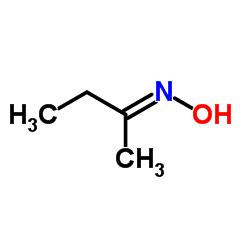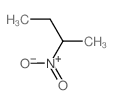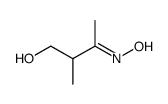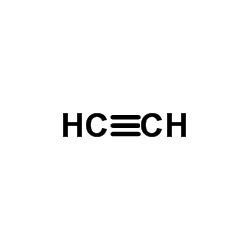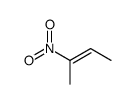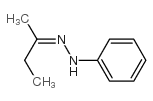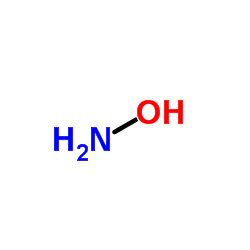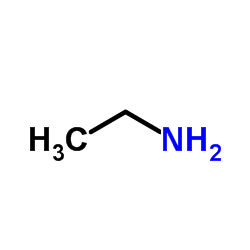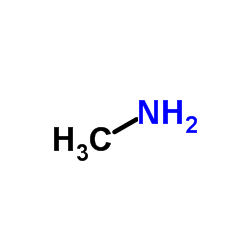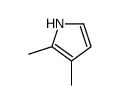96-29-7
| 中文名 | 2-丁酮肟 |
|---|---|
| 英文名 | Ethyl Methyl Ketoxime |
| 中文别名 |
乙基甲基酮肟
丁酮肟 甲乙酮肟 甲基乙基酮肟 |
| 英文别名 |
(2E)-N-Hydroxybutan-2-imine
2-BUTANONE OXIME 2-Butanone, oxime, (2E)- MFCD00013935 EINECS 202-496-6 (2E)-N-Hydroxy-2-butanimine |
| 密度 | 0.9±0.1 g/cm3 |
|---|---|
| 沸点 | 152.5±0.0 °C at 760 mmHg |
| 熔点 | -30 °C |
| 分子式 | C4H9NO |
| 分子量 | 87.120 |
| 闪点 | 60.0±0.0 °C |
| 精确质量 | 87.068413 |
| PSA | 32.59000 |
| LogP | 0.65 |
| 外观性状 | 透明液体 |
| 蒸汽密度 | 3 (vs air) |
| 蒸汽压 | 1.9±0.5 mmHg at 25°C |
| 折射率 | 1.422 |
| 储存条件 | 1.储存于阴凉、通风的库房。远离火种、热源。保持容器密封。应与氧化剂分开存放,切忌混储。 2.配备相应品种和数量的消防器材。储区应备有泄漏应急处理设备和合适的收容材料。 |
| 稳定性 | 避免与酸、氧化物接触。 |
| 水溶解性 | 114 g/L (20 ºC) |
| 分子结构 | 1、 摩尔折射率:24.51 2、 摩尔体积(cm3/mol):96.5 3、 等张比容(90.2K):219.1 4、 表面张力(dyne/cm):26.5 5、 极化率(10-24cm3):9.71 |
| 计算化学 | 1、 疏水参数计算参考值(XlogP):0.7 2、 氢键供体数量:1 3、 氢键受体数量:2 4、 可旋转化学键数量:1 5、 互变异构体数量:2 6、 拓扑分子极性表面积(TPSA):32.6 7、 重原子数量:6 8、 表面电荷:0 9、 复杂度:58.6 10、同位素原子数量:0 11、确定原子立构中心数量:0 12、不确定原子立构中心数量:0 13、确定化学键立构中心数量:1 14、不确定化学键立构中心数量:0 15、共价键单元数量:1 |
| 更多 | 1. 性状:无色油状液体。 2. 密度(g/mL,25/4℃):0.9232 3. 相对蒸汽密度(g/mL,空气=1):未确定 4. 熔点(ºC):-29.5 5. 沸点(ºC,常压):152~153 6. 沸点(ºC,5.2kPa):未确定 7. 折射率: 1.4410 8. 闪点(ºC):60 9. 比旋光度(º):未确定 10. 自燃点或引燃温度(ºC):未确定 11. 蒸气压(kPa,25ºC):未确定 12. 饱和蒸气压(kPa,60ºC):未确定 13. 燃烧热(KJ/mol):未确定 14. 临界温度(ºC):未确定 15. 临界压力(KPa):未确定 16. 油水(辛醇/水)分配系数的对数值:未确定 17. 爆炸上限(%,V/V):50 18. 爆炸下限(%,V/V):3.1 19. 溶解性:能与乙醇、乙醚混溶,溶于10份水中。 |
Synonym:Ethyl methyl ketone oxime; Ethyl methyl ketoxime; 2-Butanone oxime; Methyl ethyl ketoxime; MEK-oxime Section 2 - COMPOSITION, INFORMATION ON INGREDIENTS
Risk Phrases: 21 40 41 43 Section 3 - HAZARDS IDENTIFICATION EMERGENCY OVERVIEW
Harmful in contact with skin. Limited evidence of a carcinogenic effect. Risk of serious damage to eyes. May cause sensitization by skin contact. Potential Health Effects Eye: Causes severe eye irritation. Skin: Harmful if absorbed through the skin. May cause skin sensitization, an allergic reaction, which becomes evident upon re-exposure to this material. Ingestion: Methemoglobinemia is characterized by dizziness, drowsiness, headache, shortness of breath, cyanosis (bluish discoloration of skin due to deficient oxygenation of the blood), rapid heart rate and chocolate-brown colored blood. May be harmful if swallowed. Overexposure may cause methemoglobinemia. Inhalation: Not available. Chronic: Chronic exposure may cause liver damage. Section 4 - FIRST AID MEASURES Eyes: Flush eyes with plenty of water for at least 15 minutes, occasionally lifting the upper and lower eyelids. Get medical aid immediately. Skin: Get medical aid. Flush skin with plenty of water for at least 15 minutes while removing contaminated clothing and shoes. Remove contaminated clothing and shoes. Ingestion: If victim is conscious and alert, give 2-4 cupfuls of milk or water. Get medical aid immediately. Inhalation: Get medical aid immediately. Remove from exposure and move to fresh air immediately. If not breathing, give artificial respiration. If breathing is difficult, give oxygen. Notes to Physician: Section 5 - FIRE FIGHTING MEASURES General Information: As in any fire, wear a self-contained breathing apparatus in pressure-demand, MSHA/NIOSH (approved or equivalent), and full protective gear. During a fire, irritating and highly toxic gases may be generated by thermal decomposition or combustion. Flammable liquid and vapor. Vapors are heavier than air and may travel to a source of ignition and flash back. Vapors can spread along the ground and collect in low or confined areas. Extinguishing Media: Use extinguishing media most appropriate for the surrounding fire. Section 6 - ACCIDENTAL RELEASE MEASURES General Information: Use proper personal protective equipment as indicated in Section 8. Spills/Leaks: Absorb spill with inert material (e.g. vermiculite, sand or earth), then place in suitable container. Clean up spills immediately, observing precautions in the Protective Equipment section. Remove all sources of ignition. Provide ventilation. Section 7 - HANDLING and STORAGE Handling: Wash thoroughly after handling. Remove contaminated clothing and wash before reuse. Avoid contact with eyes, skin, and clothing. Avoid ingestion and inhalation. Use only with adequate ventilation. Keep away from heat, sparks and flame. Storage: Keep away from sources of ignition. Keep container closed when not in use. Store in a cool, dry, well-ventilated area away from incompatible substances. Section 8 - EXPOSURE CONTROLS, PERSONAL PROTECTION Engineering Controls: Facilities storing or utilizing this material should be equipped with an eyewash facility and a safety shower. Use process enclosure, local exhaust ventilation, or other engineering controls to control airborne levels. Exposure Limits CAS# 96-29-7: Personal Protective Equipment Eyes: Wear chemical splash goggles. Skin: Wear appropriate protective gloves to prevent skin exposure. Clothing: Wear appropriate protective clothing to prevent skin exposure. Respirators: A respiratory protection program that meets OSHA's 29 CFR 1910.134 and ANSI Z88.2 requirements or European Standard EN 149 must be followed whenever workplace conditions warrant respirator use. Section 9 - PHYSICAL AND CHEMICAL PROPERTIES Physical State: Clear liquid Color: clear colorless to pale yellow Odor: Not available. pH: Not available. Vapor Pressure: 0.904 mm Hg @ 25 deg C Viscosity: Not available. Boiling Point: 152.5 deg C @ 760 mm Hg Freezing/Melting Point: -29.5 deg C Autoignition Temperature: Not available. Flash Point: 59 deg C ( 138.20 deg F) Explosion Limits, lower: Not available. Explosion Limits, upper: Not available. Decomposition Temperature: Solubility in water: Slightly soluble. Specific Gravity/Density: .9200 g/cm3 Molecular Formula: C4H9NO Molecular Weight: 87.12 Section 10 - STABILITY AND REACTIVITY Chemical Stability: Stable under normal temperatures and pressures. Conditions to Avoid: High temperatures, ignition sources. Incompatibilities with Other Materials: Strong oxidizing agents, strong acids. Hazardous Decomposition Products: Nitrogen oxides, carbon monoxide, carbon dioxide. Hazardous Polymerization: Has not been reported Section 11 - TOXICOLOGICAL INFORMATION RTECS#: CAS# 96-29-7: EL9275000 LD50/LC50: CAS# 96-29-7: Draize test, rabbit, eye: 100 uL Severe; Oral, mouse: LD50 = 1 gm/kg; Oral, rat: LD50 = 930 mg/kg; Skin, rabbit: LD50 = 200 uL/kg. Skin, rabbit: LD50 = 200 uL/kg = 184 mg/kg. Carcinogenicity: Methyl ethyl ketoxime - Not listed by ACGIH, IARC, or NTP. Other: See actual entry in RTECS for complete information. Section 12 - ECOLOGICAL INFORMATION Section 13 - DISPOSAL CONSIDERATIONS Dispose of in a manner consistent with federal, state, and local regulations. Section 14 - TRANSPORT INFORMATION IATA Shipping Name: FLAMMABLE LIQUIDS, N.O.S. Hazard Class: 3 UN Number: 1993 Packing Group: III IMO Shipping Name: FLAMMABLE LIQUIDS, N.O.S. Hazard Class: 3 UN Number: 1993 Packing Group: III RID/ADR Shipping Name: FLAMMABLE LIQUIDS, N.O.S. Hazard Class: 3 UN Number: 1993 Packing group: III Section 15 - REGULATORY INFORMATION European/International Regulations European Labeling in Accordance with EC Directives Hazard Symbols: XN Risk Phrases: R 21 Harmful in contact with skin. R 40 Limited evidence of a carcinogenic effect. R 41 Risk of serious damage to eyes. R 43 May cause sensitization by skin contact. Safety Phrases: S 13 Keep away from food, drink and animal feeding stuffs. S 23 Do not inhale gas/fumes/vapour/spray. S 26 In case of contact with eyes, rinse immediately with plenty of water and seek medical advice. S 36/37/39 Wear suitable protective clothing, gloves and eye/face protection. WGK (Water Danger/Protection) CAS# 96-29-7: 1 Canada CAS# 96-29-7 is listed on Canada's DSL List. CAS# 96-29-7 is not listed on Canada's Ingredient Disclosure List. US FEDERAL TSCA CAS# 96-29-7 is listed on the TSCA inventory. SECTION 16 - ADDITIONAL INFORMATION N/A |
|
毒理学数据: 1、皮肤/眼睛刺激性 标准的Draize试验:兔子,眼睛接触:100μL,反应的严重程度:严重。 1、 急性毒性:大鼠经口LD50:930mg/kg;大鼠经吸入LD50:>50mg/m3/4H;大鼠经皮肤接触LD:>2mg/kg;大鼠经皮下LD50:2702mg/kg;小鼠经腹腔LD50:200mg/kg;兔子经皮肤接触LD50:200μg/kg; 2、 其他多剂量毒性:大鼠经口TDLo:6825mg/kg/13W-I;大鼠经吸入TCLo:400ppm/6H/4W-I;大鼠经吸入TCLo:1000ppm/6H/8W-I;大鼠经皮下TDLo:14mL/kg/4W-I;小鼠经吸入TCLo:400ppm/6H/4W-I;小鼠经吸入TCLo:1000ppm/6H/8W-I; 4、 慢性毒性/致癌性 大鼠经吸入TCLo:75ppm/6H/26W-I; 5、 致突变性 小鼠淋巴细胞突变:4600mg/L; 生态学数据: 该物质对水有稍微的危害。 CHEMICAL IDENTIFICATION
HEALTH HAZARD DATAACUTE TOXICITY DATA
MUTATION DATA
|
| 符号 |



GHS05, GHS07, GHS08 |
|---|---|
| 信号词 | Danger |
| 危害声明 | H312-H317-H318-H351 |
| 警示性声明 | P280-P305 + P351 + P338 |
| 个人防护装备 | Eyeshields;Faceshields;full-face respirator (US);Gloves;multi-purpose combination respirator cartridge (US);type ABEK (EN14387) respirator filter |
| 危害码 (欧洲) | Xn:Harmful; |
| 风险声明 (欧洲) | R21;R40;R41;R43 |
| 安全声明 (欧洲) | S13-S23-S26-S36/37/39-S61-S45-S36/37-S25 |
| 危险品运输编码 | UN 1993 3/PG 3 |
| WGK德国 | 1 |
| RTECS号 | EL9275000 |
| 包装等级 | III |
| 危险类别 | 3 |
| 海关编码 | 29280090 |
| 上游产品 10 | |
|---|---|
| 下游产品 9 | |
| 海关编码 | 2928000090 |
|---|---|
| 中文概述 | 2928000090 其他肼(联氨)及胲(羟胺)的有机衍生物。监管条件:无。增值税率:17.0%。退税率:9.0%。最惠国关税:6.5%。普通关税:20.0% |
| 申报要素 | 品名, 成分含量, 用途 |
| Summary | 2928000090 other organic derivatives of hydrazine or of hydroxylamine VAT:17.0% Tax rebate rate:9.0% Supervision conditions:none MFN tariff:6.5% General tariff:20.0% |
